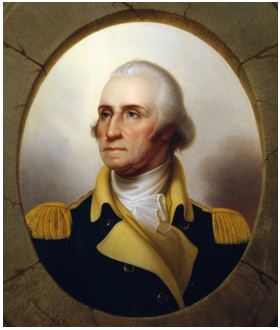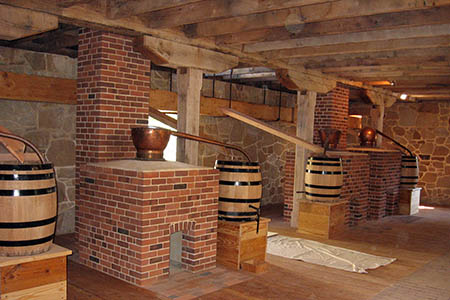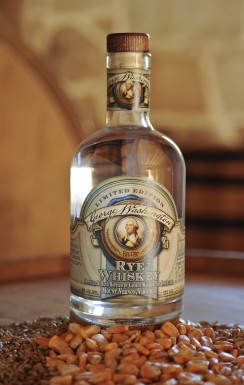George’s Best

(Rembrant Peale’s heroic image of General Washington).
I am so scattered that the week is now half gone just going to introduce myself to my grandson. The drive kicked my butt; I am clearly going to have to work on teleportation or something. I finally got around to writing the list of things I need to get done not later than the end of the week, or it can’t possibly happen by the time the serious holidays roll over us.
I think I have got some of the heavy lifting done- but there is one that is right ahead of the haircut on the list. The trip to Mount Vernon. This one is critical, glowing red hot. I need to get it done today or it may not happen.
Mount Vernon is currently owned and maintained in trust for the people of the United States by the Mount Vernon Ladies’ Association of the Union. They have managed, since 1853, to preserve the core plantation areas of George Washington’s 8,000 acre estate, which was a working plantation with all the appurtenances of the country gentleman.
Slaves, of course, which has always been a thorny issue, but the Ladies are a proto-feminist group and no men are permitted to sit on the Board of Regents. The estate is located at the business end of the GW Parkway and has gift shops, and dining facilities, interpretive exhibits and is operated by more than 500 paid employees and over 400 volunteers.
Let me be clear: I am not going down there for social justice or education. I am going down for whiskey.
Here is the back-story: in January of 1791, President Washington’s Treasury Secretary Alexander Hamilton proposed a seemingly innocuous excise tax “upon spirits distilled within the United States, and for appropriating the same.”
Surprise. Americans liked taxes then even less than we like them now. Some considered they had just fought a Revolution over the matter. Washington (the city) being what it always had been, Congress failed to anticipate the vehement and armed rejection of this tax on the frontier of Western Pennsylvania and in the great Ohio Valley. By 1794, the Whiskey Rebellion threatened the very stability of the United States. George saddled up and personally led the United States militia westward to stop the rebels.
If you want to date the start of the busy-bodies imposing their will on the public at large, you might want to start there. I can only imagine that Big Whiskey was part of Hamilton’s solution. I am equally confident they would have taxed marijuana at the time, but there wasn’t enough money in it at the time for the period equivalent of Big Pharma, so they just waited to make it illegal and make people buy their Class 3 narcotics from the companies at a fat profit.
George’s venture into his own version of the whiskey business began at the urging of his farm manager, James Anderson. Anderson, who had been involved in the distilling industry in Scotland before immigrating to Virginia in the early 1790s, was convinced that a distilling business would round out Mount Vernon’s complement of economic ventures and generate substantial profits.
It was the hardy Scots who made western civilization. Ever the discriminating businessman, Washington proceeded cautiously but allowed Anderson to purchase two stills and set up a small operation in the cooperage next to the gristmill in early 1797.
The result was the production of six hundred gallons, sold for a good profit. Encouraged, George Washington agreed to construct a large distillery over the winter of 1797-1798. In 1799, the year of Washington’s death, the distillery produced nearly 11,000 gallons, making it the largest whiskey distillery in America at the time.
So in addition to being the Father of his Country, George was the Seagrams of his day.

(The Mount Vernon Distillery today. Photo Mt. Vernon Ladies Association of the Union).
They are still at it on the plantation. Whiskey is being distilled at George’s reconstructed distillery. A small run of about 1000 bottles are offered for sale periodically at $95 per bottle. The un-aged George Washington’s Rye Whiskey® is the most authentic version of Washington’s whiskey available today. Thank goodness Anderson was a detailed record keeper: today’s Mount Vernon staff was able to determine the recipe and process of creating the legacy whiskey.
Distillers this year used the same grain recipe (60% rye, 35% corn, and 5% malted barley), mixed and fermented in 120-gallon oak barrels, and double distilled in copper pot stills, just as it was done 200 years ago. According to those in the know, the nose is, “slightly floral, earthy, and grainy,” with a taste that is “surprisingly sweet and mellow,” but with a bit of a bite, characteristic of unaged rye.
Now, that is all interesting, but hardly worth the drive down the Parkway since I have Belmont Farms Distillery much closer (and cheaper) down at the Farm. But my cousin sparked my interest when she gave me an offhand comment that her brother had purchased a decent bottle of port on the occasion of the birth of each of their children.
They opened the bottles as each of them turned 21- and enjoyed them together. I was going to open an educational savings account for my grandson- and will. But I think I will head down to George’s place and buy him a bottle of whiskey, too.
I may get two bottles- one for me, now, and put the other down to rest until 22 November, 2035.
Here’s looking at you, Kid.

Copyright 2014 Vic Socotra
www.vicsocotra.com
Twitter: @jayare303
